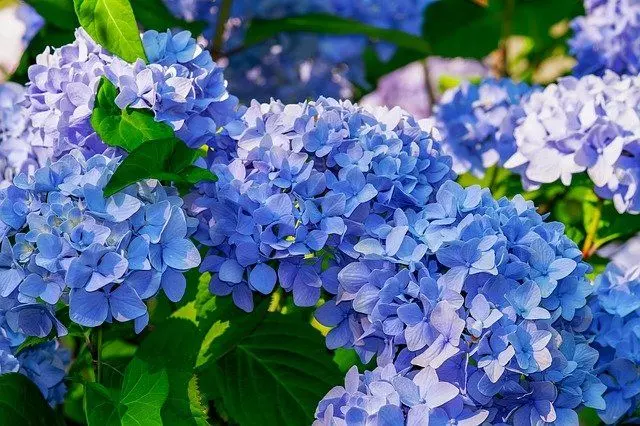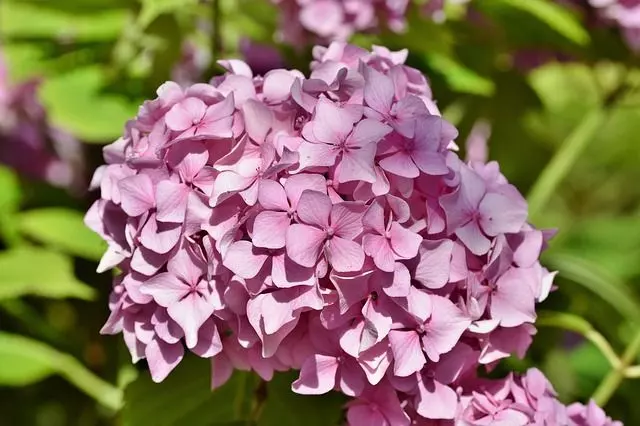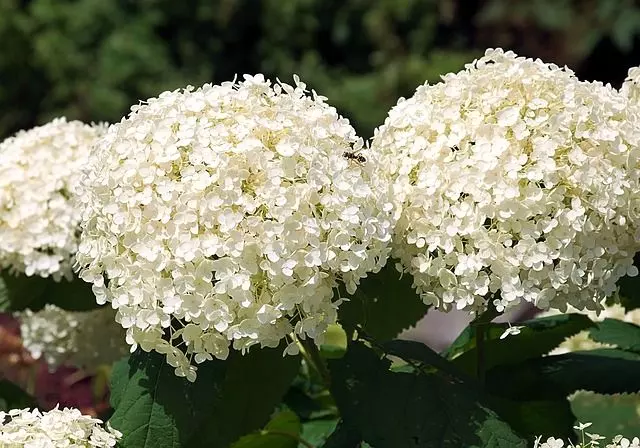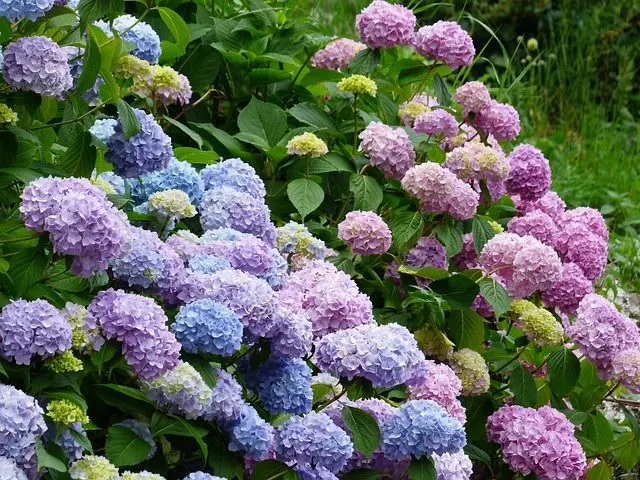Can you change the colors of hydrangea flowers? Yes, it is possible and in this article, you will learn all about it. Learn all about how to change the colors of hydrangea in this article.
We’ll explain how to change from blue to pink or pink to blue. Note that this will only work for blue or pink varieties, so white flowers cannot be changed to any other color.
Learn more about How to Care for Hydrangeas in pots.
Table of Contents
Importance of Soil pH
The hydrangea is a plant that likes acid soils, although it can adapt to alkaline soils and this is where the color that will be intensified in the plant is determined. For a quick guide, you should know that the higher the acidity, the bluer and more intense, and the lower the acidity, the whiter or more discolored.
A- A pH between 4.0 and 5.5 will give blue hydrangeas.
B- A pH between 6.0 and 6.5 will give pink hydrangeas.
C- A pH around 8.0 will give white hydrangeas.
When it comes to changing the color of hydrangeas, the key is to experiment. Although we have basic guidelines that indicate the pH requirements of the substrate and the minerals that the hydrangea needs to produce a certain color (basically its aluminum content), some elements can make our experiment not work.
It is very important to know that any modification you want to make to change the color of hydrangeas should be done at least two months before the flowering season.
How to Change Colors of Hydrangea to Blue
As we said before, obtaining the blue color in a hydrangea depends in the first instance, on the pH of the substrate which must be acidic (between 4.5 and 5.5). The other factor is aluminum which can only be absorbed if we have a sufficiently acid pH.
So the first thing you need to do is to control the acidity of the soil and if it is not, make it acidic by adding for example citric acid, vinegar, iron sulfate, etcetera. You can read the article on how to change the pH of the substrate here on the blog.
Once we achieve our goal of obtaining a pH of less than five, it is time to apply the aluminum sulfate. The proportion to prepare it is to dissolve 1/2 tablespoon of aluminum sulfate in 1.3 Gallon of water and water the hydrangea with this water twice a week about 60 days before flowering.
You should know that only hydrangeas can withstand the excess of aluminum sulfate, this product is not suitable for use on other plants. It is also ideal to use rainwater, although the aluminum sulfate will largely neutralize the lime in tap water.
When fertilizing, we will choose fertilizers rich in potassium and low in nitrogen and phosphorus.
This treatment would serve both to maintain the color of the blue hydrangea you just bought and to turn a pink hydrangea into blue.
Finally, it should be noted that you can buy a product called “hydrangea blueing agent” directly from a nursery, but you will still have to check the pH of the soil.

How to Change Colors of Hydrangea to Pink
Pink hydrangeas are the most common because the water with which we usually water our plants comes from the tap, which has a high lime content depending on the area where we live. This constant watering with alkaline water will remove the acidity of the soil and in this way our hydrangea stops absorbing the aluminum from the soil, turning pink.
If we want to convert the color of hydrangeas to pink, what we must do in the first instance is to reduce the acidity of the soil by raising the pH to about 6.5 maximum.
We can add calcium nitrate, dolomite, and even, according to a homemade trick I found out there, paprika (the spice) or wood ashes from the stove.
When it comes to fertilizing, we will use fertilizers rich in nitrogen and phosphorus and poor in potassium. It is also said that the addition of copper sulfate can help and incidentally acts as a fungicide… There is a natural coloring pigment called phytochrome that can be applied but it is very difficult to obtain.
Consider that the higher the pH of the soil, the less intense the color will be, it will gradually fade to a whitish-green tone. A trick that is said to work to intensify the pink of the hydrangea to fuchsia is to add hydrangea blue (the one we use to turn it blue) but at a non-acidic pH.

Get White Hydrangeas
First and foremost you should know that you will never get pure white from a hydrangea that is pink or blue.
What you get by raising the pH to about 8.0 is to “lighten” the color of the flower so much, that it looks white.
This is one of the most difficult things to achieve, so, unfortunately, you can only experiment.

Multicolored Hydrangea Blooms
By carefully adding sodium carbonate to the soil, it is said that a multicolored bloom can be achieved.
Many times we find naturally different colors in the same hydrangea plant, the belief is that each branch absorbs nutrients differently, having in some areas more or less aluminum.
For us to be able to modify the color of hydrangeas it must present some shade of color at some point. A pure white hydrangea, such as the variety ‘Annabelle’, can never be colored, no matter what we do.
And here we are, I hope to have clarified at some point the doubts you may have had about How to Change Colors of Hydrangea, and above all that it has helped you to take better care of your hydrangeas.
Learn more about How to Care for Hydrangea.

